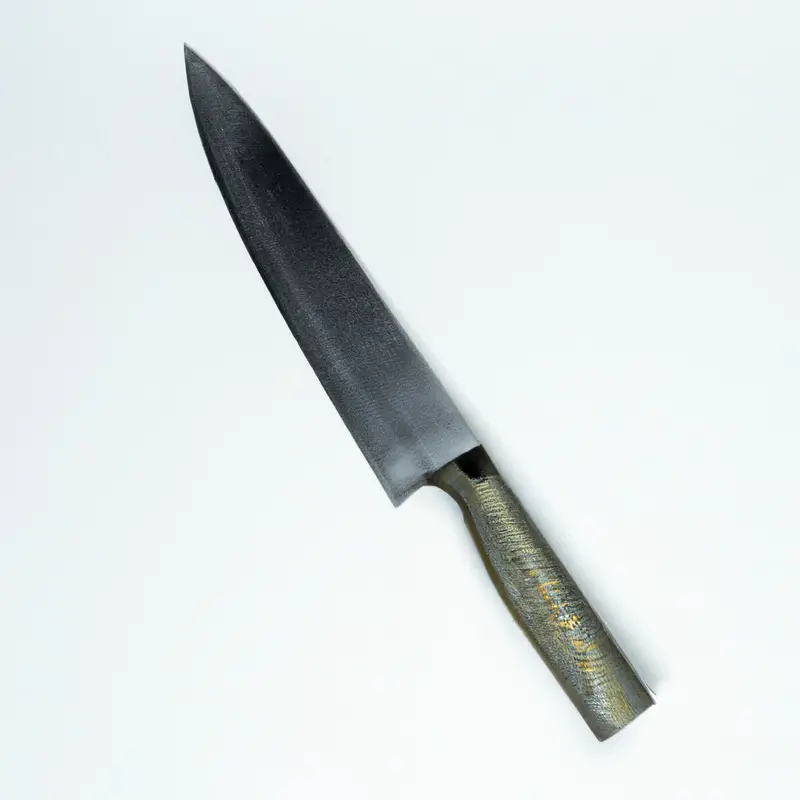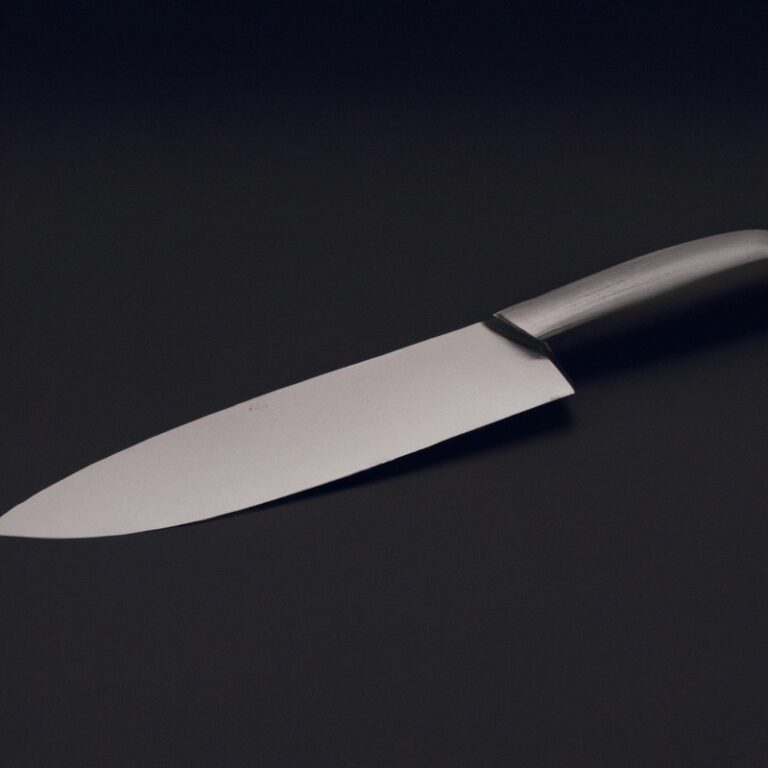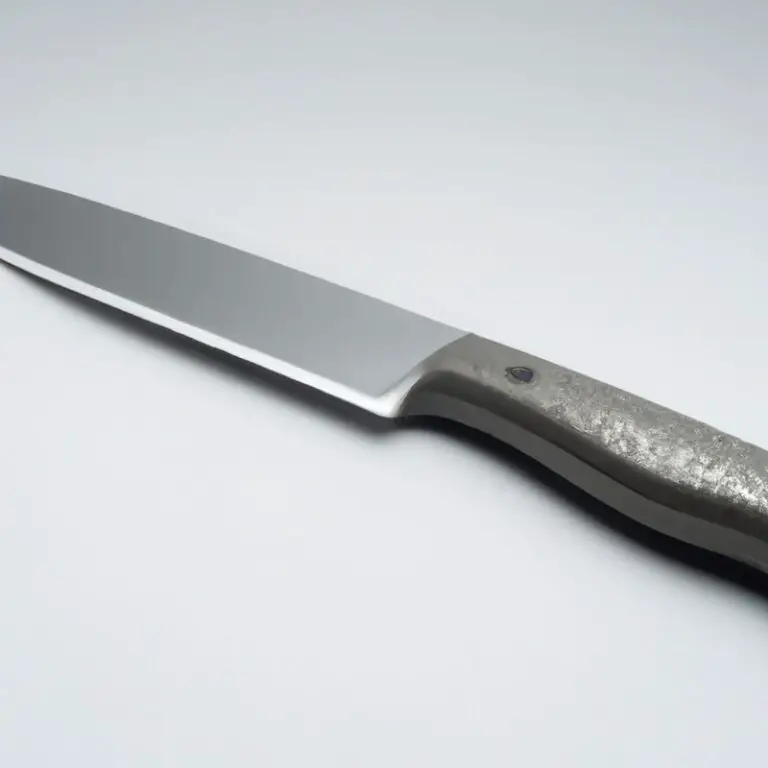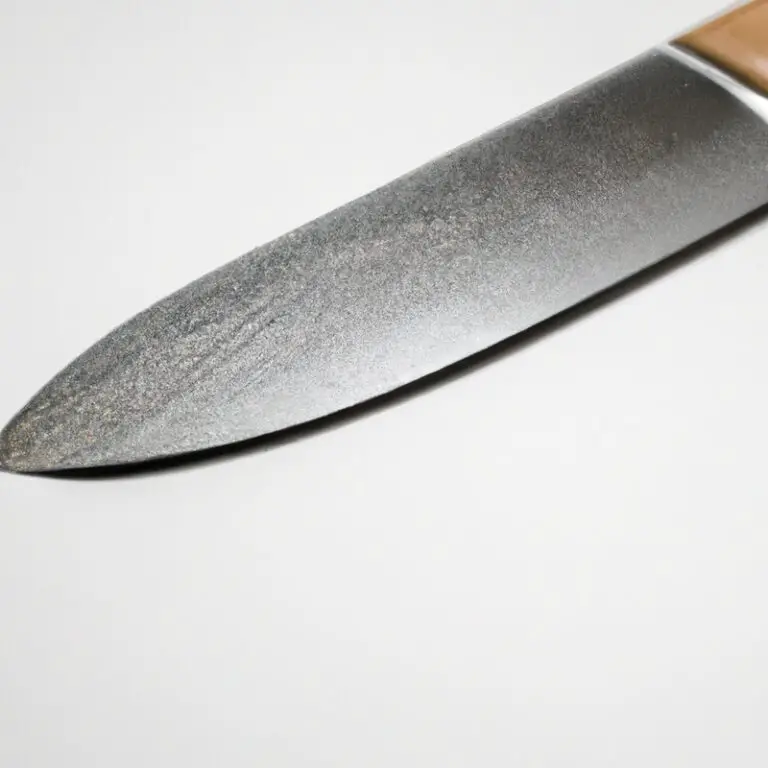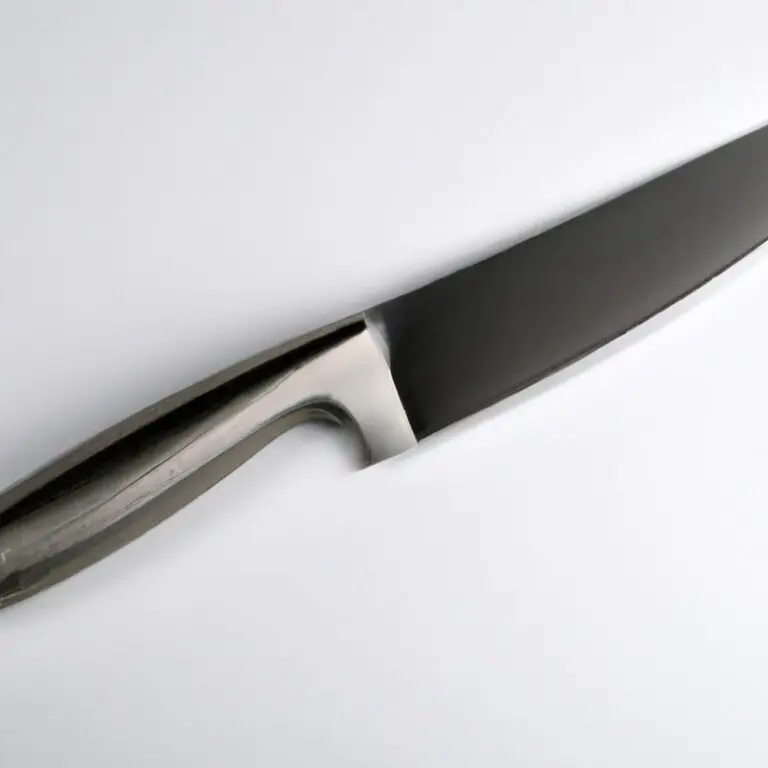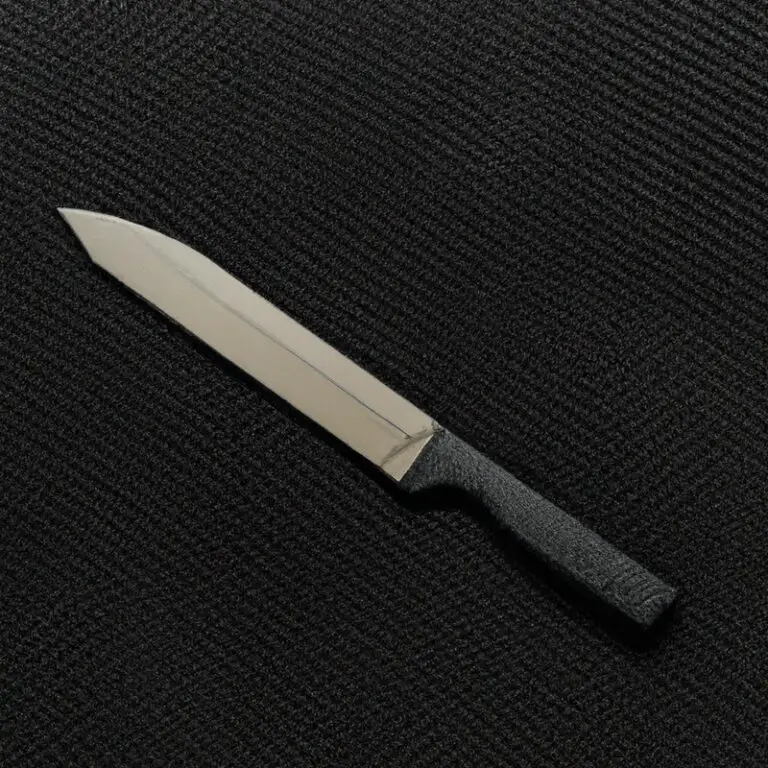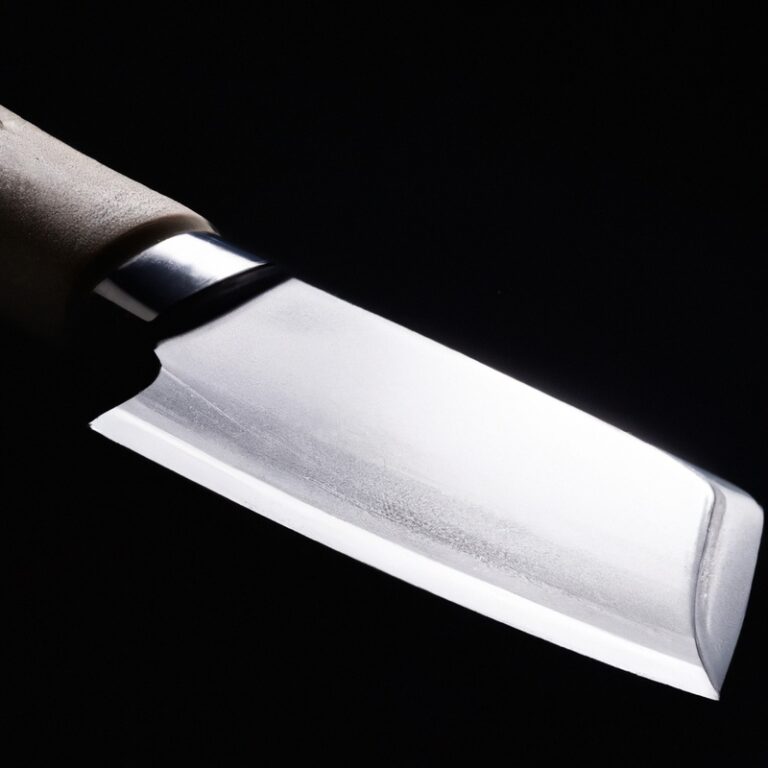What Is a Gyuto Knife? – A Versatile Kitchen Essential
Key Takeaways:
- A Gyuto knife is a versatile Japanese chef’s knife that can be used for a variety of cutting tasks in the kitchen.
- The blade of a Gyuto knife is thin and sharp, making it ideal for precision cutting and slicing.
- Gyuto knives are typically made of high-quality steel and require careful maintenance to ensure their longevity.
- If you’re serious about cooking, investing in a good quality Gyuto knife can make a world of difference in your kitchen.
Are you tired of struggling with an ineffective kitchen knife? It’s time to consider the versatile and efficient Gyuto knife.
This Japanese cutting tool has gained fame all over the world for its unique features and exceptional performance.
As a culinary enthusiast and expert, I can attest that the Gyuto knife is a must-have in every kitchen. But what makes it so special?
In this article, we’ll explore the origins, anatomy, uses, and advantages of the Gyuto knife.
Join me as we discover everything you need to know about this powerful kitchen tool.
| Property | Description |
|---|---|
| Name | Gyuto Knife |
| Origin | Japan |
| Blade Length | 20-30cm (8-12 inches) |
| Blade Width | 4.5-5cm (1.8-2 inches) |
| Blade Shape | Curved, pointed tip, flat edge |
| Blade Material | High Carbon Stainless Steel |
| Handle Material | Wood, plastic, or composite |
| Weight | 150-250 g (5-9 oz) |
| Uses | Multi-purpose kitchen knife, suitable for slicing, chopping, and dicing meat, fish, and vegetables |
The Basics: What a Gyuto Knife Is and Its Origins
A Gyuto knife is a type of Japanese kitchen knife that is traditionally used for slicing, dicing, and chopping vegetables, fish, and meat. It has a thin, sharp blade that is designed to make precise cuts and is typically made from high-quality steel.
The word “Gyuto” means “cow sword” in Japanese, and the knife is believed to have originated in the Edo period (1603-1867) when samurai began using Western-style knives to prepare their meals.
The Gyuto knife is often compared to the Western-style chef’s knife, but it has a thinner and sharper blade, making it more suitable for delicate tasks. Since its inception, the design of the Gyuto knife has evolved, and today, it is available in various lengths and materials.
As Japanese cuisine continues to gain popularity worldwide, the Gyuto knife has become a must-have tool for professional chefs and home cooks alike.
Differences Between Gyuto and Western-style Chef’s Knives
Gyuto knives and Western-style chef’s knives have some significant differences.
- Blade shape: Gyuto knives have thinner, longer, and straighter blades than Western-style chef’s knives, which have wider and curved blades.
- Blade angle: The blade angle of a Gyuto knife is sharper than that of a Western-style chef’s knife.
- Handle design: Gyuto knives have a Japanese-style handle, which is often lighter and smaller than the handles on Western-style chef’s knives.
- Blade hardness: Japanese blades are traditionally harder than Western-style blades, which allows them to hold a sharper edge for longer.
- Cutting style: Gyuto knives are versatile and suited for many types of cutting tasks, such as chopping, slicing, and dicing. Western-style chef’s knives, on the other hand, may be better suited for heavy-duty tasks such as cutting through bones.
- Price: Generally, Gyuto knives are more expensive than Western-style chef’s knives due to the materials and intricate manufacturing process involved in making them.
When choosing between a Gyuto knife and a Western-style chef’s knife, it ultimately comes down to personal preference and the specific needs of the user.
Understanding the Anatomy of a Gyuto Knife
Understanding the anatomy of a Gyuto knife is essential to mastering its use in the kitchen. The blade of a Gyuto knife typically ranges from 7-12 inches in length and has a curved, pointed tip with a flat cutting edge.
The blade is typically thinner and sharper than a Western-style chef’s knife, allowing for precision cutting and slicing.
The handle of a Gyuto knife can vary in size and material but is designed to provide a comfortable grip for the user. Some handles are made of traditional Japanese materials such as wood or horn, while others are made of more modern materials such as plastic or composite materials.
Another important aspect of the anatomy of a Gyuto knife is the balance between the blade and handle.
A well-balanced Gyuto knife will feel comfortable and natural in the hand, making it easier to control during use. Overall, understanding the anatomy of a Gyuto knife is crucial to selecting the right knife for your needs and using it effectively in the kitchen.
A well-designed and well-balanced Gyuto knife can make all the difference in achieving precise cuts and preparing delicious meals.
How to Choose the Best Gyuto Knife for Your Needs
When choosing a Gyuto knife, there are several factors to consider to ensure you get the best one for your needs. Firstly, consider the blade length.
Longer blades are ideal for slicing large amounts of food, while shorter blades offer more precision.
Secondly, consider the blade material. High-carbon steel is durable and holds a sharp edge, while stainless steel is resistant to rust and corrosion.
Thirdly, consider the handle material.
Look for a handle that feels comfortable and secure in your hand. Fourthly, consider the knife’s weight and balance.
A well-balanced knife will feel comfortable and reduce strain on your wrist.
Finally, consider the price. You can find a good quality Gyuto knife at a variety of price points, but keep in mind that investing in a higher quality knife may save you money in the long run.
By considering these factors, you can choose a Gyuto knife that will meet your specific needs and enhance your kitchen experience.
The Advantages of Using a Gyuto Knife in the Kitchen
The Gyuto knife has a plethora of advantages when used in the kitchen. These advantages include:
- Versatility: The Gyuto knife is a multi-purpose tool that can handle a variety of kitchen tasks, such as slicing, dicing, and chopping.
- Precision: The sharpness and thinness of the blade allow for precise cuts, which is particularly useful when working with delicate ingredients.
- Comfort: The ergonomic handle and balance of the Gyuto knife make it comfortable to use for extended periods.
- Efficiency: The streamlined design of the Gyuto knife reduces drag, making it easier to make cuts with minimal effort.
- Aesthetics: In addition to its practical advantages, the Gyuto knife’s sleek design adds an elegant touch to any kitchen.
Investing in a high-quality Gyuto knife can revolutionize the way you approach cooking. With its versatility, precision, comfort, efficiency, and aesthetics, the Gyuto knife is a valuable asset for any home cook or professional chef.
The Specific Uses of a Gyuto Knife in Japanese Cuisine
The Gyuto knife is a versatile kitchen tool that is essential in Japanese cuisine. Here are its specific uses:
- Precision cutting: Gyuto knives have sharp and thin blades perfect for precision cutting of meats, fish, and vegetables.
- Slicing: The long and narrow blade of Gyuto knives is ideal for slicing raw fish and sashimi in Japanese cuisine.
- Chopping and dicing: The wide blade and curved belly of a Gyuto knife facilitate chopping and dicing of seafood, meats, and vegetables.
- Carving: Gyuto knives can also be used to carve cooked meats and poultry into uniform pieces.
- Mincing: The sharp edge of a Gyuto knife can be used to mince garlic, ginger, and other seasoning ingredients.
Overall, the Gyuto knife is a reliable kitchen tool with a variety of applications in Japanese cuisine.
Proper Care and Maintenance of Your Gyuto Knife
Proper care and maintenance are essential for keeping your Gyuto knife in top condition. Here are some tips to ensure your knife lasts a long time:
- Hand wash your knife with soapy water, not in the dishwasher. Dry it completely after washing to prevent rust.
- Avoid using abrasive cleaning materials or scrubbers that can damage the blade’s surface.
- Store your Gyuto knife in a knife block or magnetic knife holder to prevent it from getting damaged and to keep it sharp.
- Keep the blade sharp to ensure the knife is effective. Use a sharpening stone or honing steel for sharpening.
- Don’t use your Gyuto knife on hard surfaces like glass and plates, as it can cause the blade to chip or become dull.
By following these simple tips, you can ensure that your Gyuto knife remains sharp and in good condition for years to come.
Popular Brands of Gyuto Knives and Their Features
Some popular brands of Gyuto knives are Wüsthof, Shun, Global, and Miyabi. Wüsthof offers a range of Gyuto knives to suit different budget and needs.
Their Classic and Classic Ikon lines are popular for their comfort handles and precise cuts.
Shun Gyuto knives are known for their beauty and sharpness. They have a layered Damascus steel blade and a Pakkawood handle.
Global’s Gyuto knives have a sleek, one-piece design made of high-quality stainless steel.
They are lightweight and provide a comfortable grip. Miyabi Gyuto knives are handcrafted in Japan and feature a mix of traditional and modern techniques.
Their blades are made of high-carbon stainless steel with a Damascus pattern and a comfortable handle made of durable materials.
Each brand offers unique features and benefits. When choosing a Gyuto knife, consider your personal preferences and budget.
You may also want to consider factors like blade length, blade material, handle design, and weight.
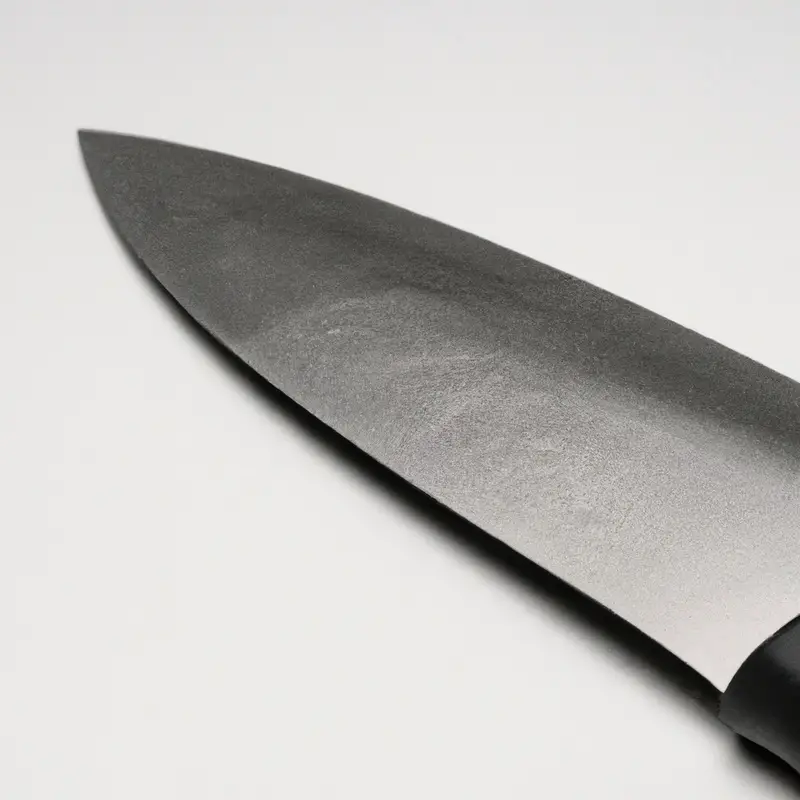
The Evolution of Gyuto Knives Over Time
The Gyuto knife has undergone various changes over the years, from its origination as a Japanese kitchen knife to its modern-day use worldwide. Originally designed to slice fish, the blade’s shape has now been altered to cater to different cutting styles and has since become a versatile tool for various cooking techniques.
Changes over time include alterations to the blade shape, size, and metal composition to improve durability and performance.
Today, innovations such as laser cutting have facilitated the creation of sharper and thinner blades, providing greater precision in cutting. Brands have also incorporated various features such as ergonomic handles and rust-resistant coatings.
As the demands of cooking continue to evolve, so will the Gyuto knife.
Expert Tips on Sharpening Your Gyuto Knife for Maximum Performance
Expert Tips on Sharpening Your Gyuto Knife for Maximum Performance:
- Use the right sharpening tools: A Gyuto knife requires different sharpening tools than a Western-style chef’s knife. Invest in a high-quality whetstone and a honing rod designed specifically for Japanese knives.
- Take the time to prepare the whetstone: Soak the whetstone in water for 10-15 minutes before use. This helps to prevent slippage and ensures the stone is ready for sharpening.
- Maintain the correct angle: When sharpening your Gyuto knife, maintain an angle of 15-20 degrees. Use a consistent angle throughout the entire sharpening process for even results.
- Use a honing rod regularly: A honing rod helps to maintain the edge of your Gyuto knife between sharpenings. Use it before and after each use to keep the blade in top condition.
- Test the edge: To check if your Gyuto knife is sharp enough, try slicing through a tomato. A well-sharpened knife will easily cut through the skin without squishing the flesh.
Sharpening your Gyuto knife is essential for maximum performance in the kitchen. By following these expert tips, you can ensure your knife stays sharp and performs at its best for all your culinary needs.
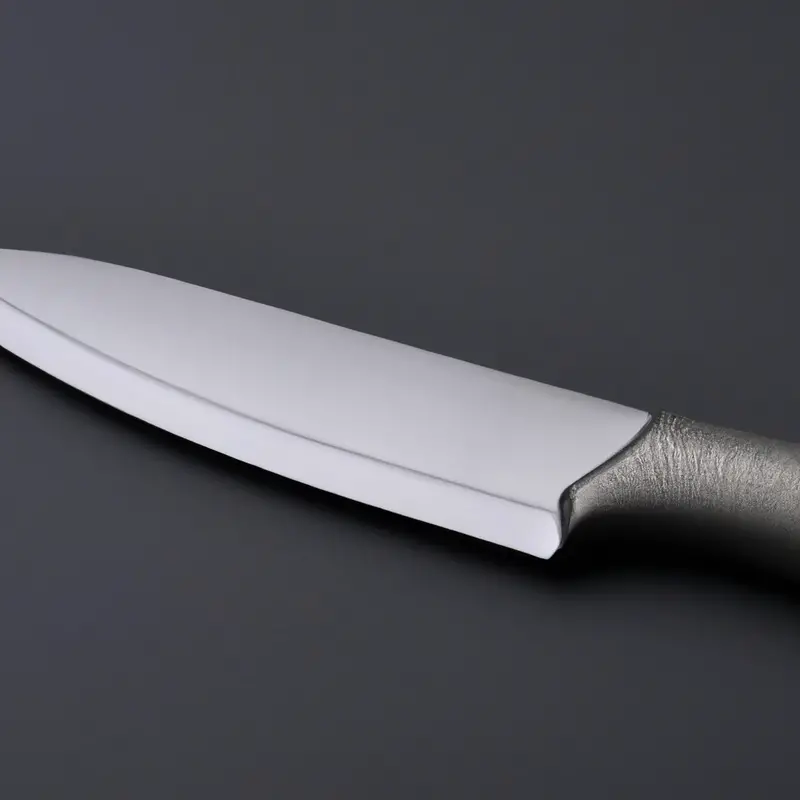
Final Verdict
Understanding the basics, anatomy, and differences between a Gyuto knife and Western-style chef’s knives can help you have a better understanding of this versatile Japanese kitchen tool. With proper care and maintenance, a high-quality Gyuto knife can last for years and provide you with a precision cutting experience.
Whether you are a professional chef or home cook, the advantages of using a Gyuto knife are undeniable.
Remember to select the right Gyuto knife for your needs and always sharpen it for maximum performance. Trust in the history and evolution of the Gyuto knife, and explore popular brands to find the perfect Gyuto knife for your cooking adventures.
Embrace the expertise of this traditional Japanese kitchen tool and elevate your culinary skills to the next level.

